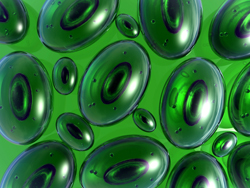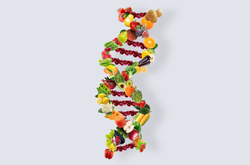Building light harvesters on cell membranes
Within the plasma membrane are numerous proteins that serve a variety of critical functions. Some of these integral membrane proteins are photosensitive, particularly in green plants and bacteria where they play a role in photosynthesis or lower level forms of harvesting energy from sunlight. The electromagnetic spectrum (EM) consists of radiation at all frequencies, but photosensitive integral membrane proteins (PIMPs) typically use only a small part of the EM, decreasing their efficiency. One region of the EM that is unused is that from the ultraviolet (UV) to the blue region. The ‘Energy conversion within the hybrid materials engineered from the nanocrystals quantum dots and photochromic membrane proteins’ (Nanophotochrome) project was designed to use nanotechnology and genetic engineering to develop built-on-the-membrane light-harvesting antenna to increase the efficiency of light-harvesting by photosynthetic reaction centres (RCs) or the energy-producing PIMP bacteriorhodopsin (bR). Quantum dots (QDs) are unique nanomaterials capable of absorbing light in a broad spectrum, including that of interest, and converting it to a narrower, and in this case, biologically useful region. The researchers successfully developed optically coupled transfer donor (QD)-acceptor (PIMP chromophore) pairs (PIMP-QDs) as hybrid nano-units that enhance photosynthesis in light-harvesting and energy-transmitting systems. They extended this work to include development of such materials for photovoltaic applications. Finally, project partners studied the process of energy transfer in the hybrid materials and within immunocomplexes with an eye toward development of diagnostic tools for detection of breast cancer metastases. In summary, the Nanophotochrome project produced a novel nanotechnology-biological system hybrid capable of increasing light-harvesting in biological systems. The technology has broad-sweeping application to increased efficiency of green plants and some bacteria and the photovoltaic energy sector, as well as cancer detection.







